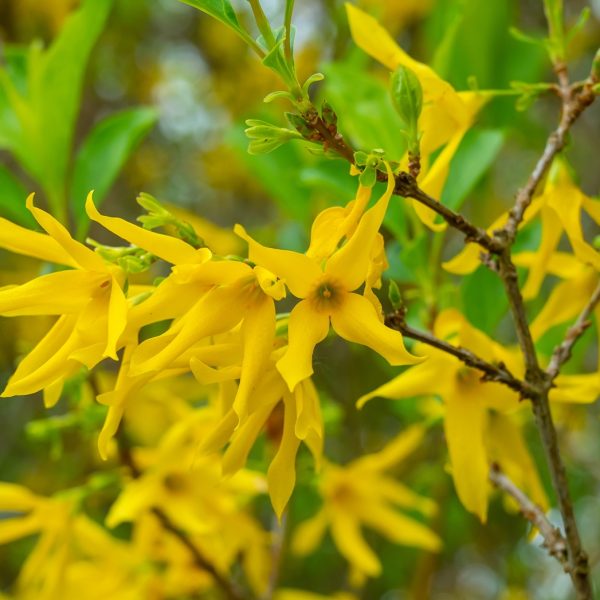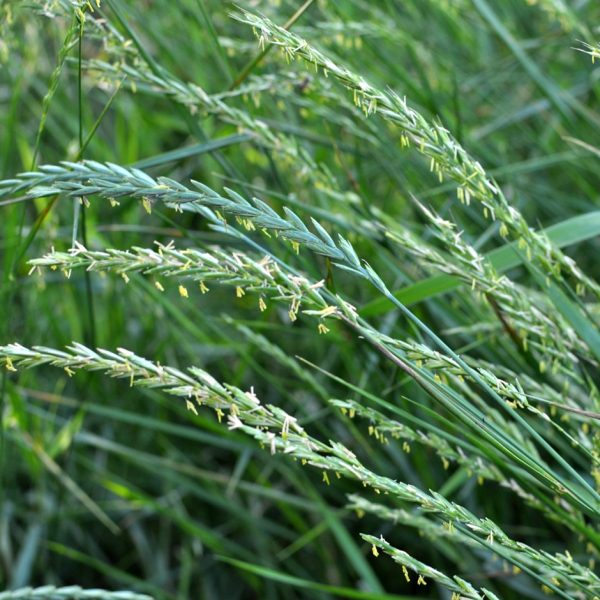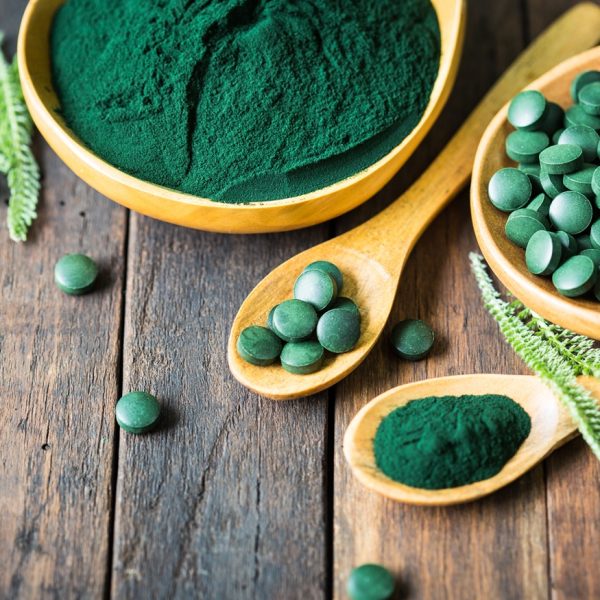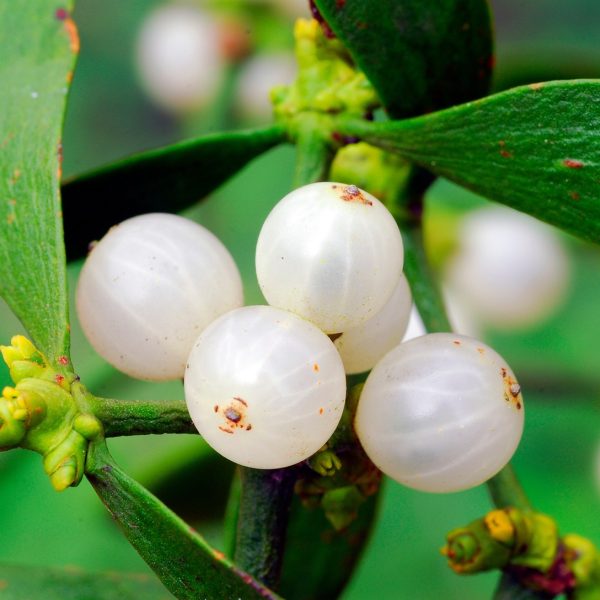Practicing herbalism sustainably involves a multitude of considerations, from how to source herbs, purchased, foraged or grown, to how to run a clinic. Jonas Brab offers guidance on sustainable herbalism.

“First, do no harm… neither to the patients nor to the natural habitats of medicinal plants” writes Joseph Brinkman in his article on sustainable herbalism (2021). Given the nature of the path of herbalism, it is perhaps easy to assume that environmental sustainability as well as social justice would be at the heart of herbal medicine to ensure the long-term availability of medicinal plants, protect biodiversity, and support communities who cultivate and wild-harvest herbs. Yet, the path to a sustainable future is clouded by a lack of transparency and understanding as we step into relationships with herbs that have travelled many miles and passed many hands on the way.
Most practitioners are probably a long way away from the completely local, self-sustainable herbalist. The global trade of herbs and spices isn’t necessarily unsustainable and can indeed support people, plants and the ecosystems they are part of around the world. The sustainability of any given choice depends on a multitude of factors and is dependent on time and locality specific circumstances. Sustainability in herbalism means to practice herbalism in such a way that the future of herbs, the planet and the people involved is guaranteed and thriving. Every interaction we have with the world has an impact on it, whether we see it or not. Within a herbal practice this applies to various areas of work, from the way we get our herbs, the environmental impact of running our clinic to advice or education we may offer to others.
This guideline will look at ways to practice sustainably, within these three areas and provide relevant information and resources to make ethical decisions when it comes to practicing sustainable herbal medicine
Sourcing herbs

Buying herbs
Whether you wild-craft or grow your own herbs, the chances are that you still rely on buying herbs from all over the world. Quality, ecological sustainability and social equity are all interconnected. Suppliers may promise sustainable supply chains, but it is not uncommon for promises to fall short. If you really want to know what your supplier’s promises really mean, ask them.
- Do they know where their herbs come from?
- Have they seen the land it is harvested from?
- Are the herbs wild-harvested or cultivated? Is the land safe from major pollution?
- Are growers and harvesters treated with respect?
- Do they know the full supply chain?
Transparency in the herbal supply chain has long been an issue, although development in the recent decades has brought huge improvements (read more in Josef Brinckmann’s article). Suppliers need to know that transparency matters to their customers.
Certifications
Certifications such as organic can provide certain guarantees about environmental sustainability. FairWild specifically addresses the social equity and ecological sustainability of wild harvested herbs. Other certifications such as Fair4Life and FairTrade are dedicated to social equity side of things, and less with the ecological side of things. However, certified herbs may be more pricey — a challenging, but very real aspect of running a herbal practice. In establishing financial sustainability, pragmatic choices often have to be made.
Endangered herbs
Certain herbs are endangered and therefore their use is best avoided. Herbal Reality has a specific guide, which shows which herbs are best avoided or their use minimised, as their populations around the world are dwindling. The guide also offers information on which herbs might be used alternatively to these endangered herbs.
One of the benefits of a global trade of herbs is, after all, that we have access to so many different herbs, that we are usually able to find a different herb, that might be able to replace an endangered herb in one of our formulations.
Wild harvesting herbs
If you are able to wild harvest herbs for your practice, this is a great way to extend the relationship with the medicinal herbs you use. It is not uncommon for people to start gaining a completely new level of appreciation and respect, when wild-crafting their own medicines.
However, it is important to consider a few points, in terms of quality and sustainability:
- Familiarise yourself with the land around you. Is the land being sprayed with pesticides? Are there any other concerns or possible pollutants?
- Familiarise yourself with the law. In the UK, it is illegal to dig up or remove a plant completely from the land on which it is growing without permission from the landowner or occupier (picking leaves or flowers is not removing the plant itself).
And when it comes to actual harvest guidelines, The Honourable Harvest written by Robin Wall-Kimmerer acts as a wonderful guide to a sustainable, relational harvest:

“Know the ways of the ones who take care of you, so that you may take care of them.
Introduce yourself. Be accountable as the one who comes asking for life.
Ask permission before taking. Abide by the answer.
Never take the first. Never take the last.
Take only what you need.
Take only that which is given.
Never take more than half.
Leave some for others.
Harvest in a way that minimizes harm.
Use it respectfully. Never waste what you have taken.
Share.
Give thanks for what you have been given.
Give a gift, in reciprocity for what you have taken.
Sustain the ones who sustain you and the earth will last forever.” (1) (Wall-Kimmerer, 2015, p.183)
This guide goes beyond the practical sustainability focused view of plant populations and invites us into a more relational way of approaching herbs.
For more on sustainable harvesting practices, read our article A guide to safe and sustainable foraging.
Growing herbs
Perhaps you have space to grow your own herbs and turn them into medicines. This is another way to step into a deeper relationship with the plants you use. To get to know herbs from the time they are but a seed, all the way to when you harvest them creates an understanding a medicine, far richer than when we merely buy herbs from a supplier. Avoiding peat-enriched compost and the use of any chemicals is perhaps an important aspect of sustainable growing. There are many herbs that grow well in the UK, and most are much less demanding than many of the plants we have cultivated for food production, as many can be grown in pots and small spaces. Even if you cannot grow enough for your own practice, growing herbs may help you foster your connection to the plant, and may therefore help you deepen your appreciation for it. And it’s fun!
For more articles on growing herbs, explore
Environmental impact of running a clinic
Packaging
Packaging often relies on cardboard, plastic, glass or aluminium. All these materials bring their benefits and drawbacks when it comes to sustainability. Perhaps most relevant for this guide are aluminium, glass, and plastic — as these are used for bottles, and are used by herbalists to buy, store and sell tinctures.

Aluminium
Aluminium is a material that can be infinitely recycled (currently 35% of aluminium in use is recycled), which from a sustainability point of view, is very beneficial. On the other hand, the raw material for aluminium manufacturing, called bauxite, is extracted mostly from Australia, China, Guinea, and Brazil and is often found in areas that count as indigenous land and contain ecosystems of particular importance, such as the Amazon rainforest in Brazil or the Guinean rainforest.
The mining requires extensive infrastructure, and the construction of mining sites therefore tends to have a very negative impact on local flora and fauna. Additionally, the mining process requires a lot of water, which can put local water systems and the life that depends on it under pressure. Large amounts of waste product, known as red mud, are stored in open air dams, which require large amounts of land.
Due to their high alkalinity, salinity and presence of heavy metals, this red mud poses a threat to local environments — plants, animals and people alike — in particular if said dams break (2). This happened in 2010 in Hungary, burying a town underneath this waste mud and giving those who came into contact with it chemical burns. In 2020, an article stated that globally there were three billion tonnes of red mud stored around the world, with numbers increasing yearly by 150 million tonnes per year (3).
There are currently trials underway to find uses for this waste product. While aluminium may be promising for long term recyclability, its current, ever-increasing use poses many environmental threats in areas of the world that need protecting the most, and affecting local communities. Perhaps another concern, although less from a sustainability point of view, is the potential of aluminium to react with ethanol and for aluminium particles to find their way into the stored tincture (4,5).
Glass
Glass is often seen as an environmentally friendly material. It is made from silica-rich sand, its production doesn’t produce toxic waste and it is long lasting — the oldest intact glass bottle is dated to 325 and 350 AD (6). Glass breaks back down into silica and doesn’t pollute the environment like plastic does. However, glass comes with its own cost for the environment when it comes to its production. It requires a large amount of heat, which makes it the carbon heaviest, when used as a single use item. Glass recycling systems vary from nation to nation.
In some countries, systems are in place to reuse bottles, without having to melt them down and recycle them. These reuse systems are perhaps the most sustainable option. But more often, even when glass is recycled, it is first crushed, molten down and then reshaped. Though recycled glass still requires less energy for reshaping into new glass products.
The sand used is also an increasingly sought after resource — being the second most used resource in the world after water, and resources are dwindling (6). Its production requires a large amount of land, which can impact local biodiversity and silica dust can cause health issues for those involved in the production.
So, while glass may be sustainable — if reused often — it’s highly unsustainable if used as a single use item.
Plastic
Perhaps most associated with negative impacts for the environment are plastics. Plastics are made from mineral oils and, once used, break down into micro plastics, damaging ecosystems by polluting the air, soil and water — plastic has a bad reputation. Being a very durable, light and versatile material, it is used in all industries. Whilst striving to reduce plastic usage is an important aspect of sustainable practice, it is worth considering the downsides of alternative materials too.
Overall, the question is not only, which material we may use for storage and delivery of herbal medicine, but also how we use them. And of course, we are reliant on suppliers and the way they package herbal products too. Aluminium and glass products may be more sustainable to plastic, but only if they can be reused. Glass has a high footprint in production, but it’s chemically a very stable compound and could technically be reused indefinitely. How can we get to systems, where we might refill tinctures, rather than using new aluminium, glass or plastic all the time? This is a challenge, not just for local herbalists but for the wider herbal industry.
Green energy
Renewable energy is on the rise in the UK (7). While the production of technology used within renewable energy doesn’t come with its own costs, it is still the most sustainable source of energy we have. Switching to renewable energy providers is another way, one can contribute to a more sustainable future.
Sustainability awareness

While we can aim to improve our own way of working with herbs towards more sustainability in many practical ways, perhaps one of the most important elements to be able to do this is to increase our own awareness around sustainability matters and to share this awareness with others too. Whether we offer health consultations, herb walks, gardening talks, teach or hold workshops, we are engaging not just with herbs but with people too.
What can we do, to first raise our own awareness but then also that of those we engage with? How can sustainability be a more fundamental part of herbalism?
One way perhaps to include more sustainability in the way we teach herbalism. Every time we learn of a herb, we learn its pharmacology, its medicinal uses and perhaps some of its history and folklore. But do we learn where it comes from, how it is harvested and transported and how its live plant populations are impacted through our use of it? There is so much more to an herb’s story than its pharmacology.
There are increasing resources available at Herbal Reality but also elsewhere when it comes to sustainability issues within the herbal industry: TRAFFIC, The Sustainable Herbs Initiative and FairWild.
Yet, awareness builds best on experience. By working with herbs from seed to final herbal product can offer a vital understanding and appreciation for the herbs that we work with and their journey to becoming medicine.
Building a sustainable future: Step by step

There are no easy solutions to a sustainable future. So much is clear. Everything has a cost, and we cannot escape using carbon, and leaving a footprint on this earth. It may seem overwhelming to try and tackle everything and perhaps even financially impossible for some to do as much as they would like to.
Many people within the sustainability profession experience burn out due to their strong drive and commitment to face the challenges and bring on change, and difficulty in pushing back against the consumerism and demands of the modern growth economy (8). Being exposed to the information about the impact of climate change on the planetary ecosystems and all life, can bring on many challenging emotions.
The change required is way beyond the capacity of any individual, yet we all need to do something. While aiming for a more sustainable future, we have to do this with compassion and understanding for our own place within it. Tread lightly, not just on the planet but within our own minds.
What can we realistically achieve within our work? Where do we need to aim for a compromise, between financial and environmental sustainability? Where can we do more? How can we bring about change with joy and collaboration, rather than shame and guilt. This mental shift is also necessary if we want to walk towards a sustainable herbal practice.
Summary
Here is a quicky summary of this sustainable herb guide.
- Source herbs sustainability where possible:
- Choosing Organic and FairWild
- Avoid using endangered species
- Practice sustainability when foraging herbs
- Grow your own
- Running a clinic
- Research and choose your packaging materials wisely — reuse and recycle where possible
- Switch to renewable electricity
- Sustainability awareness
- Stay tuned to sustainability matters
- Include sustainability in teaching about herbs
- Share insights and practices with others.
References
- Wall-Kimmerer, R., 2015. Braiding Sweetgrass: Indigenous Wisdom, Scientific Knowledge and the Teachings of Plants.
- UKGBC Embodied ecological impacts – Aluminum. Accessed 03/05/2025. https://ukgbc.org/our-work/topics/embodied-ecological-impacts/aluminium/
- Lynch, H., Krebs, K., Russel, S., 2024. Eco-anxiety, burnout and loneliness: Why sustainability work takes a personal toll.
- Service, R., 2020. Red alert Researchers are working to find new uses for red mud, the caustic byproduct of aluminum production.
- Stahl, T., Falk, S., Rohrbeck, A. et al. 2017. Migration of aluminum from food contact materials to food—a health risk for consumers? Part II of III: migration of aluminum from drinking bottles and moka pots made of aluminum to beverages.
- M.M. Vela, R.B. Toma, W. Reiboldt, A. Pierri, 1998. Detection of aluminum residue in fresh and stored canned beer.
- Lee, C., 2023. For centuries we have used glass to store food, beverages, chemicals and cosmetics. But is it time to find a more sustainable alternative?
- Department for Energy Security & Net Zero. 2025 Energy Trends UK, October to December 2024 and 2024

